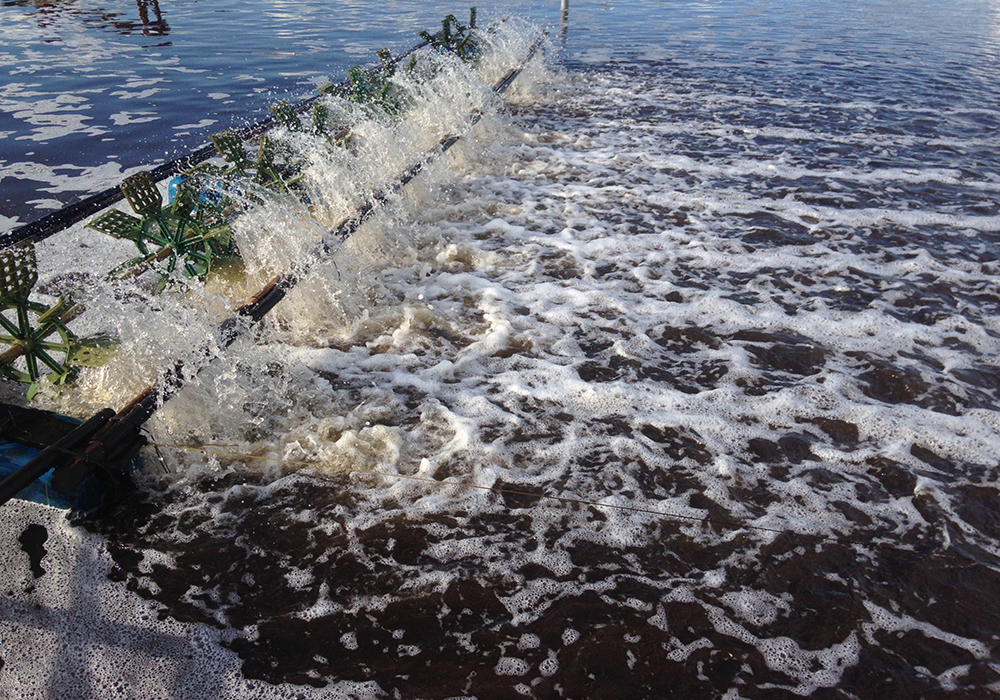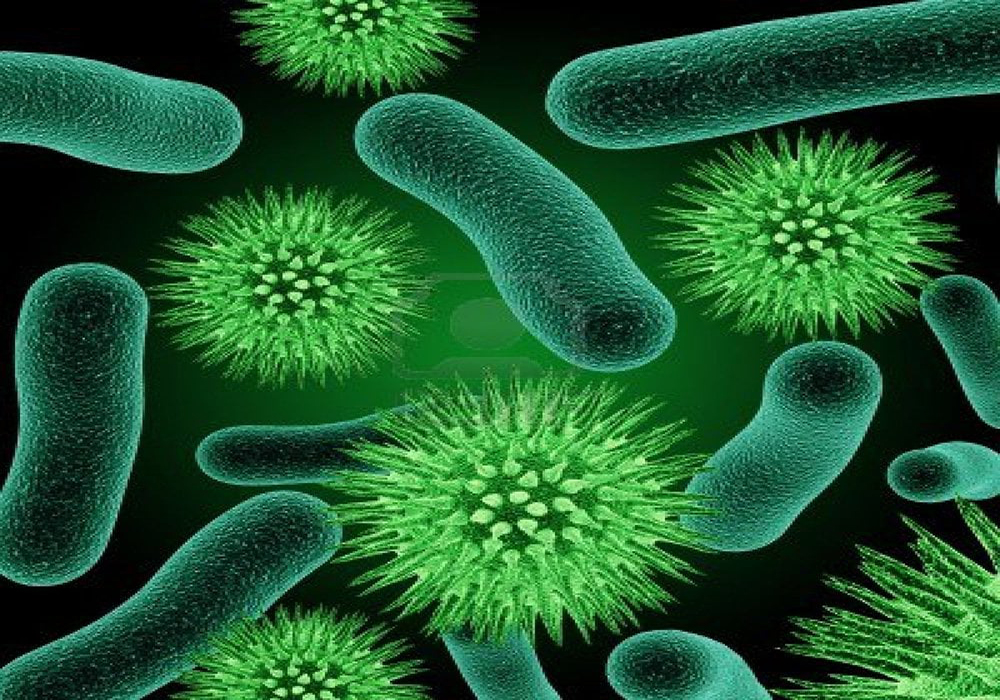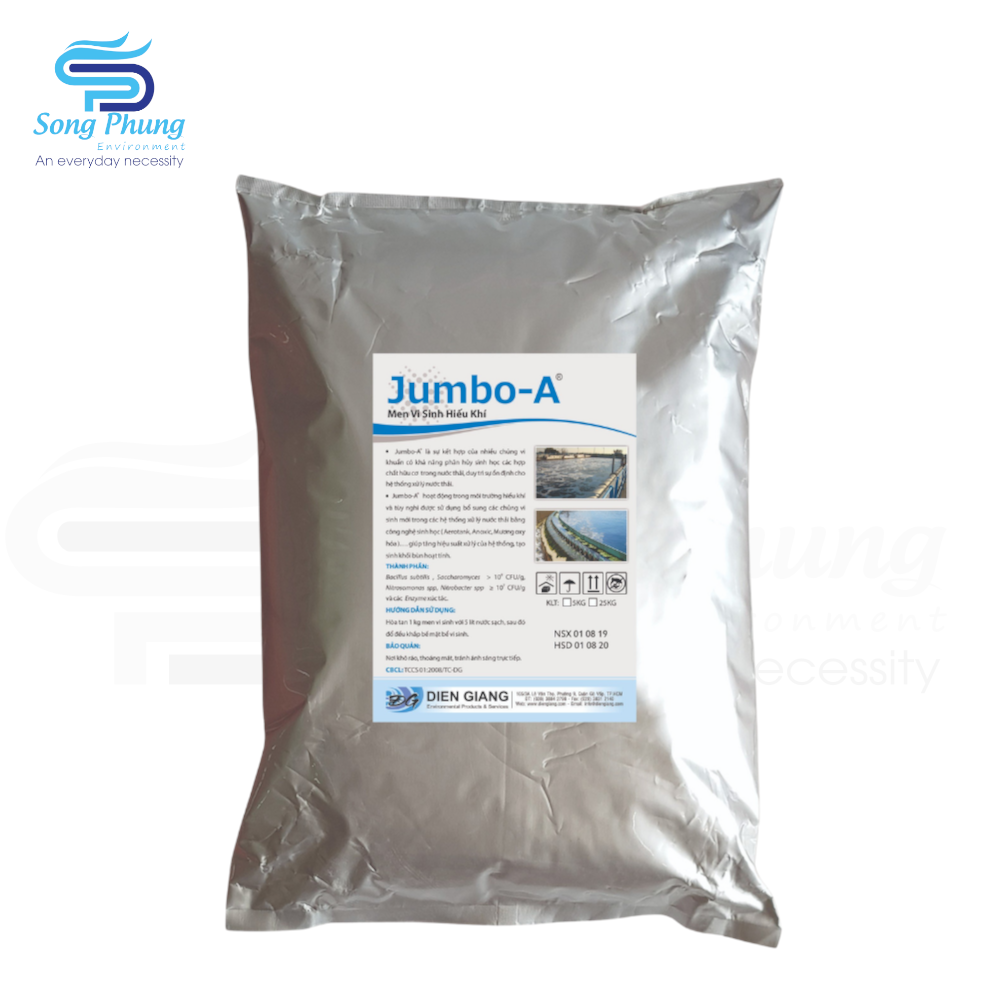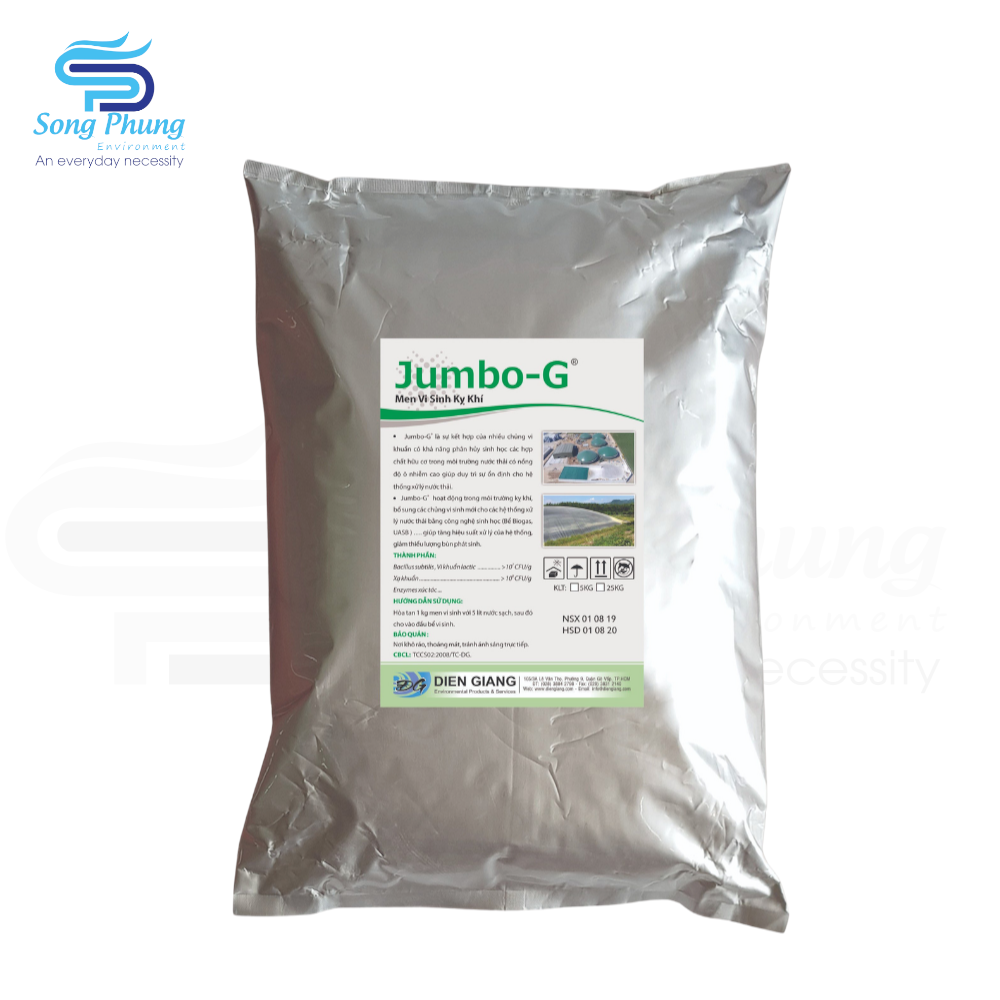Using microorganisms to treat wastewater is becoming more and more popular in life, serving from production to daily life. This is a safe, quick and cost-effective method of wastewater treatment.
What are wastewater treatment enzymes?
Wastewater contains a lot of organic substances, grease, nutrients and many pathogenic microorganisms. These types of waste are often discharged into sewers, lakes, rivers and streams without treatment. Therefore, wastewater treatment with microbiological products plays an important role in protecting the water environment and protecting the health of the community.

Microbial enzymes for wastewater treatment are a mixture of powder or liquid, containing beneficial strains of bacteria, fungi and enzymes. They are capable of working strongly in environments containing organic matter such as wastewater. The mechanism of action of microbiological enzymes for wastewater treatment is based on the vital activities of microorganisms; using organic matter as food and energy source to metabolize and decompose wastewater; thereby reducing the concentration of pollutants and toxins in wastewater. Each type of microbiological enzyme will be suitable for each type of wastewater with different composition and properties.

Unexpected uses of probiotics in wastewater treatment
Wastewater treatment microorganisms have many uses in wastewater treatment such as:
- Limit many sources of disease in wastewater.
- Treat odors from industrial wastewater, toilets, sewer water, and polluted lake water.
- Clean algae and scum in ponds, lakes, lagoons and lagoons.
- Inhibits the activity of harmful bacteria present in water.
- Helps convert organic wastewater into water for watering plants with high nutritional content.
- Used to decompose waste in toilets or wastewater systems, minimizing costs when renting a vacuum truck.
Microbial wastewater treatment method
Wastewater treatment by aerobic microorganisms
Aerobic wastewater treatment is to create suitable environmental conditions, providing adequate oxygen for beneficial microorganisms to grow. It is imperative to maintain a continuous oxidation process so that these microorganisms can function at their best.
For the oxidation process to take place smoothly, substances including colloids, dispersants, and dissolved organic matter in wastewater will move into the cells through 3 main stages:
- Contaminants migrate from the liquid phase to the surface of plant cells.
- Substances in microbial cells are metabolized and produce energy to synthesize new cells.
- Diffusion from the cell surface through a semipermeable membrane across the concentration gradient inside and outside the cell.
Anaerobic wastewater treatment
This method uses a group of anaerobic microorganisms in an environment that ensures adequate oxygen supply. The speed of this treatment process will depend largely on the following factors: The content of organic substances, suspended solids in the wastewater, the content of fibers, the content of flow stabilizers, etc.
Each different condition will create different influencing factors, the rate of biochemical reactions in wastewater is also different. Specifically, the factors that greatly affect this biochemical process are: dissolved oxygen content in water, nutrients in wastewater, pH of wastewater, temperature and other trace elements.
The two most effective types of microorganisms for wastewater treatment today
Microbial wastewater treatment Jumbo-A distributed by Song Phung Company
Jumbo-A (made in Vietnam) is a powdered aerobic probiotic that can solve common problems in wastewater treatment systems such as wastewater that does not meet discharge standards, poorly functioning microorganisms, difficult-to-settle activated sludge, unsatisfactory water color, bad odors, etc.

When adding probiotics, the efficiency of treating organic substances and pollutants in wastewater is more stable thanks to the creation of a new activated sludge layer or the addition of an old activated sludge layer in wastewater treatment tanks. Some of the main bacterial strains in Jumbo-A aerobic yeast include: Bacillus subtilis, Saccharomyces, Nitrosomonas spp, Nitrobater spp, catalytic enzymes, fungi, lipase… The density of microorganisms in Jumbo a yeast fluctuates > 1010 Cfu/g.
Microbial wastewater treatment Jumbo-G distributed by Song Phung Company

Jumbo-G is a combination of many strains of bacteria that decompose organic compounds in the wastewater environment, helping to maintain the stability of the wastewater treatment system. Jumbo-G is a probiotic that works in anaerobic environments; used in wastewater treatment systems using biological technology (Biogas tanks, UASB); helps increase wastewater treatment efficiency, minimize the amount of sludge generated. Microbial density ≥ 107 CFU/g.
Jumbo water treatment probiotic products are distributed by Song Phung Company. You can buy the product at: https://thietbinganhnuoc.com/san-pham/men-vi-sinh-jumbo-a. The product packaging has full information about ingredients, uses and instructions for use.
See more: What Is TDS In Water? Using TDS To Design Water Treatment System
If you do not know which type of probiotic to choose for wastewater treatment, please contact hotline +84 913.90.72.74 for more specific advice on products as well as optimal solutions for household and production wastewater.
Follow Fanpage: https://www.facebook.com/SongPhungthietbinganhnuoc/ to be updated with new products.


